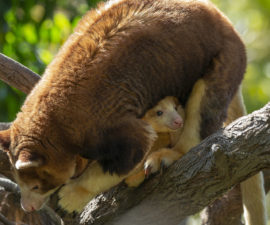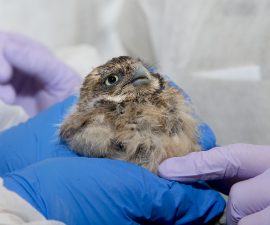BY Peggy Scott
Photography by Ken Bohn
From the tips of his spotted (and frequently flattened) ears to the end of his striped tail, Oscar the African black-footed cat kitten is every inch the golden boy. His arrival on February 24, 2019, coincided with the 91st Academy Awards, and he represented such a big win in two ways—our first successful birth of this species; and a much-needed addition to the overall population—that it seemed appropriate to give him a name synonymous with great achievement. It is estimated that there are fewer than 10,000 black-footed cats left in the wild, and approximately 50 living in 19 managed-care facilities across the United States. Odette, Oscar’s mother, could be in contention for black-footed cat producer of the year!
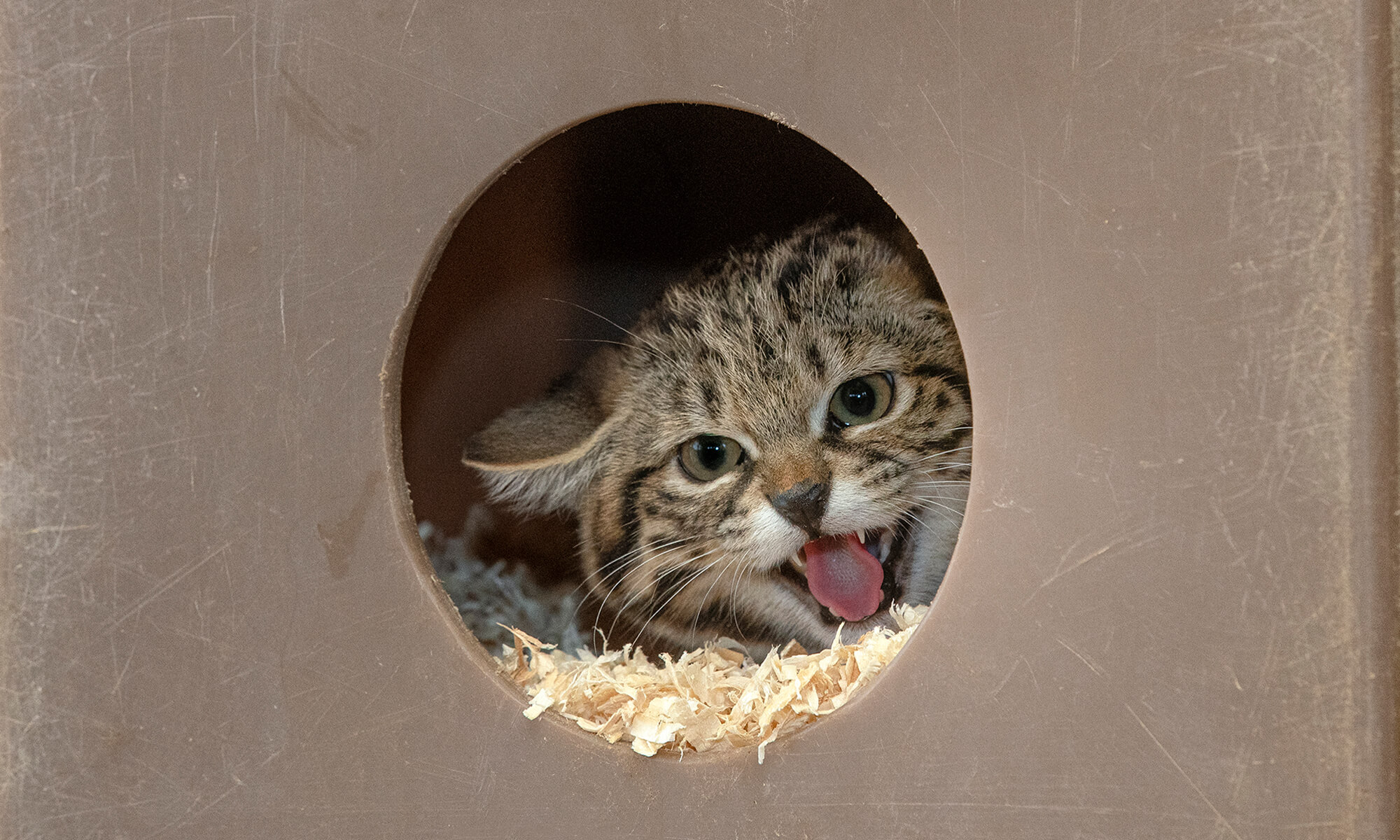
CAT IN THE BOX
From the safety of his denning box, Oscar the black-footed cat kitten isn’t shy about letting his feelings be known.
The relative scarcity of Felis negripes, at least in managed care, has a lot to do with the cats’ finicky nature in the romance department. “It’s not just a matter of putting a male and female together,” explains Dion Rice, a senior keeper at San Diego Zoo Global’s Carnivore Breeding Center (CBC). “The individual cats have to be compatible and ‘like’ each other. Sawyer, Oscar’s father, followed Odette around for a bit, and she seemed receptive. But it took time. We didn’t witness any breeding, but obviously they got together. Patience is definitely a virtue with these cats.”
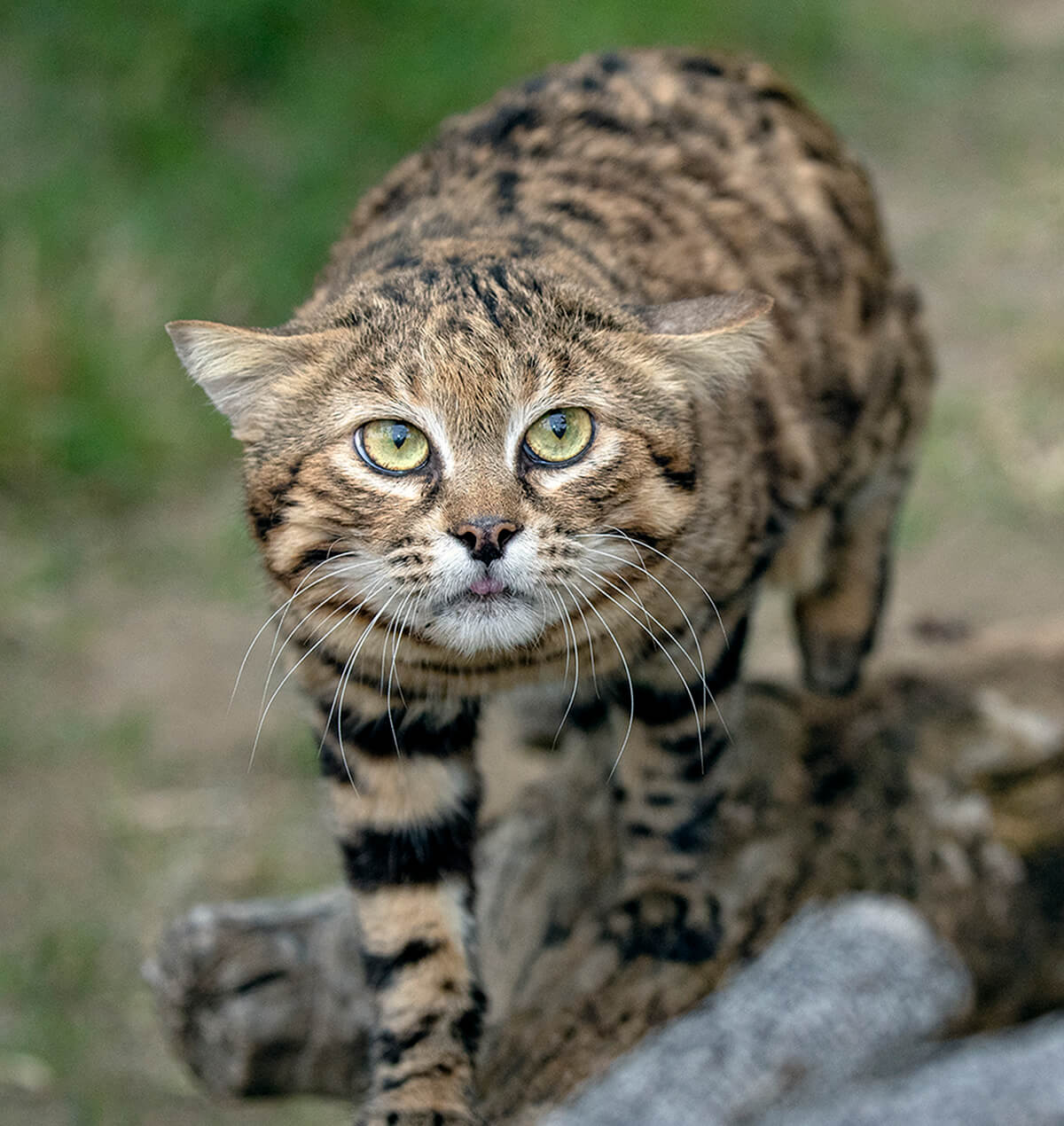
LADIES’ CAT
Sawyer is a bit of a cat around town, having previously been paired with Yuna. His time with Odette has resulted in our first black-footed cat kitten.
Sawyer has been studying for his role as successful kitten sire for some time. Previously, he had been paired for a couple of years with Yuna, the Safari Park’s other female black-footed cat, who lives at the Ione and Paul Harter Animal Care Center (ACC). They had an on-again-off-again relationship, seeming to get along well and even breed, but no kittens resulted. With so few of the species in US zoos, the best baby bet appeared to be introducing Sawyer to his new leading lady, Odette. The wager paid off last February, when Oscar was born. Keepers were well prepared for his arrival, fashioning a roomy den box from a large, rubber trash can with an entry door cut into it. The cozy container was lined with wood shavings, covered securely, and fitted with a camera, so that Odette could be monitored while still maintaining her privacy. “Traditional den boxes were too small to allow for a camera,” Dion explains. “So other facilities with these cats had to wait until the mother brought a kitten out. We could keep an eye on them from a distance.”
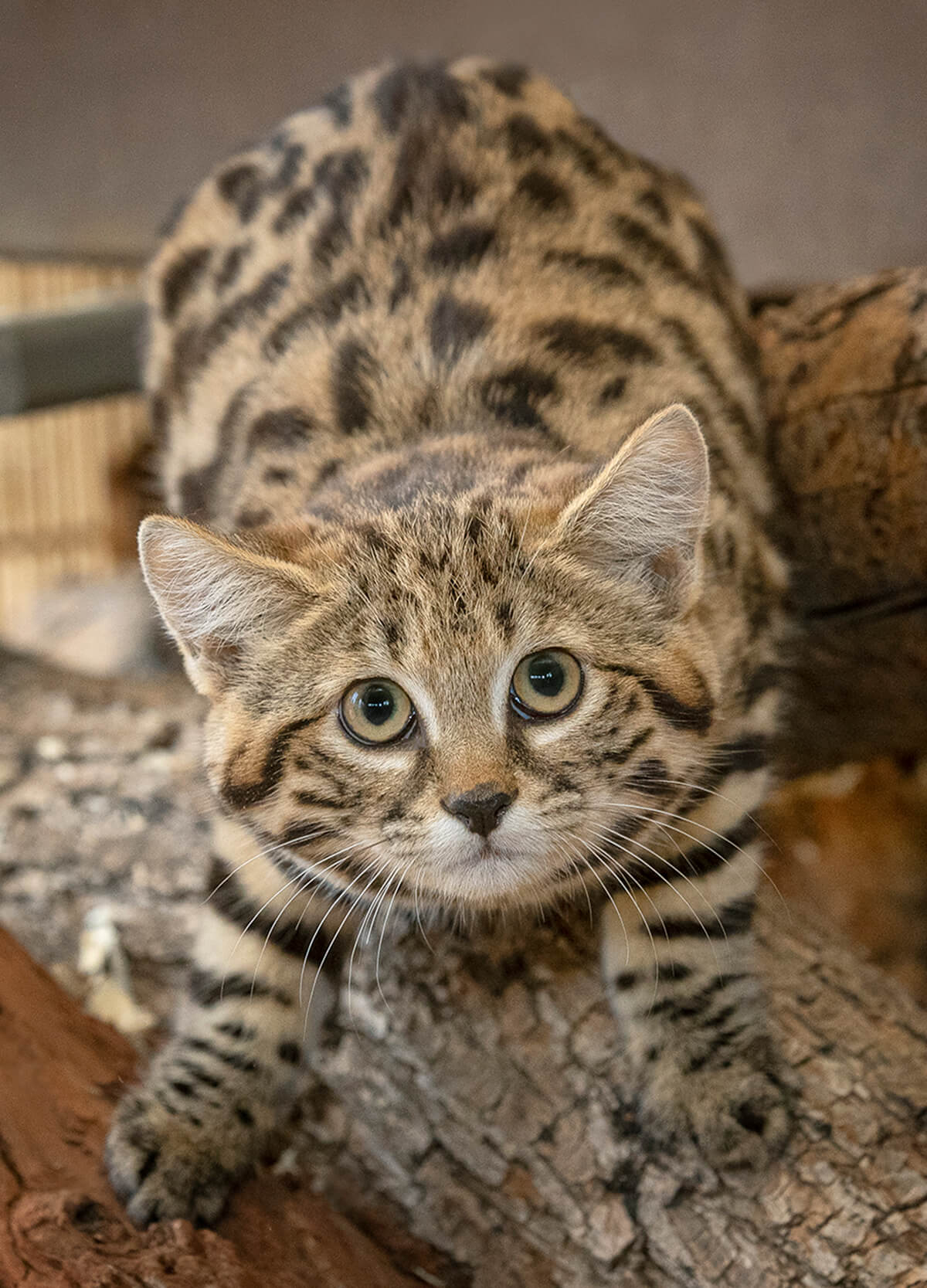
SPOTS AND STRIPES FOREVER
The coats of black-footed cats are adorned with round, dark spots over the body and rings on the legs, neck, back, and tail.
Oscar’s birth was caught on camera, allowing keepers to monitor his progress from the beginning. As he grew, it became apparent that he would be a perfect miniature of Sawyer, sporting a lush, golden-tan coat with round, dark spots. Those spots expand to rings on his legs, neck, and tail. And yes, the hair on the undersides of their front paws and back legs is black, hence the animals’ common name. The patterned coat serves as camouflage, which helps whether you’re the predator or prey. It’s also believed that those black-bottomed feet give this cat a leg up when walking on hot sand in their home ranges of Botswana, Namibia, and South Africa.
The naturally secretive nature of these cats makes them enigmatic subjects to follow. In their enclosure at the CBC, activity often takes place at odd (to us) hours. “As soon as the sun goes down, the party starts,” Dion says “Odette and Oscar run around and play throughout the night. We’ve gotten footage of them playing at 4:30 in the morning.”
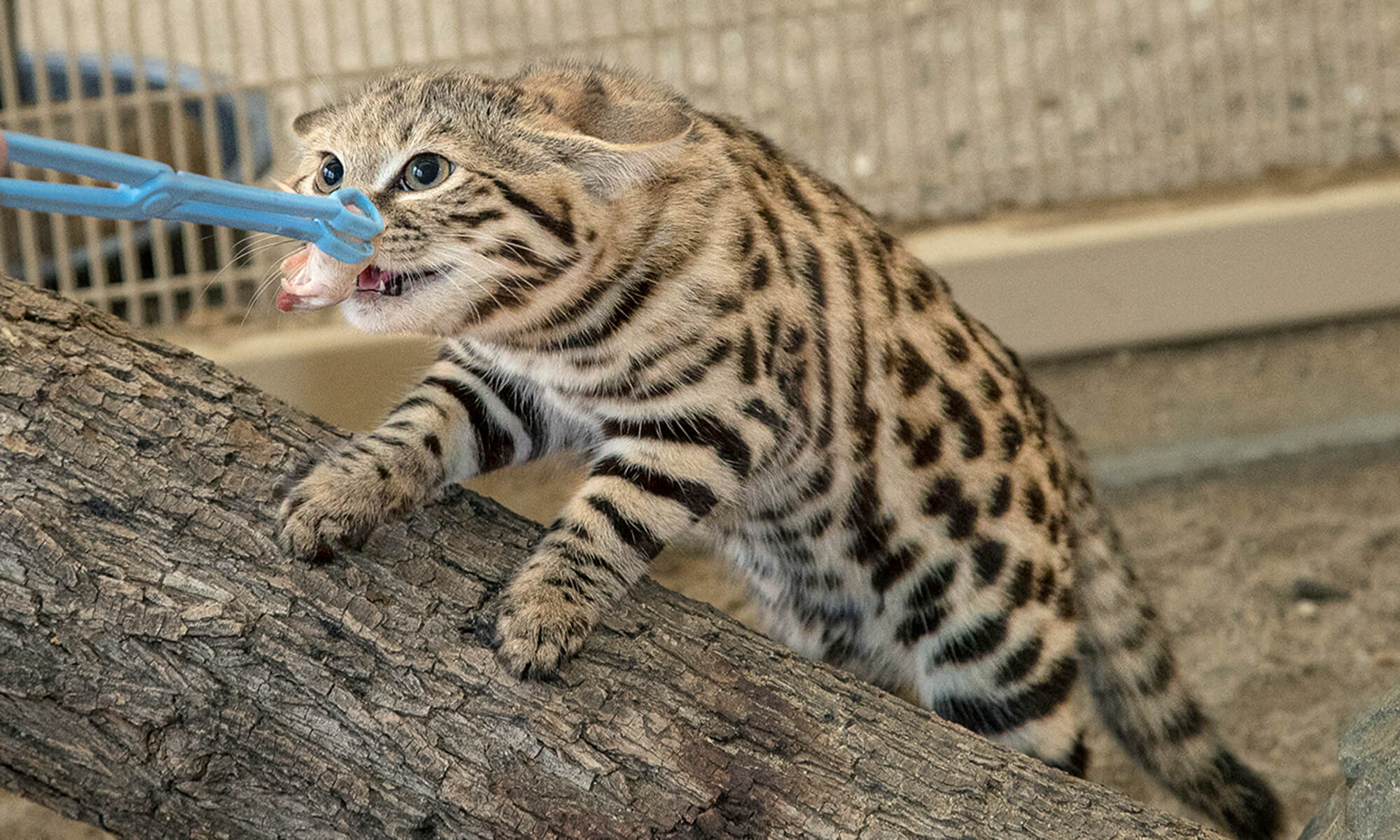
TOOLS OF THE TRADE
Feedings include the use of tongs, which protect keepers’ hands from enthusiastic eaters.
Dion calls it both a challenge and joy to work with black-footed cats. “They’re so cute and little, but feisty and hissy little cats,” she says, noting that adults top out at around four pounds and are about the height of an average house cat. But they are still wild creatures. “We offer them their food held in tongs because they need to be reminded that they don’t need to swat the food out of your hand.” And when it comes to dining on delicacies such as rat pieces, frozen mice, and fish, Oscar is a member of the clean plate club, capable of consuming not only his meals but some of his mother’s as well. “We have to watch him because he will eat everything,” Dion says. “At 13 weeks of age, he already weighed more than mom.”
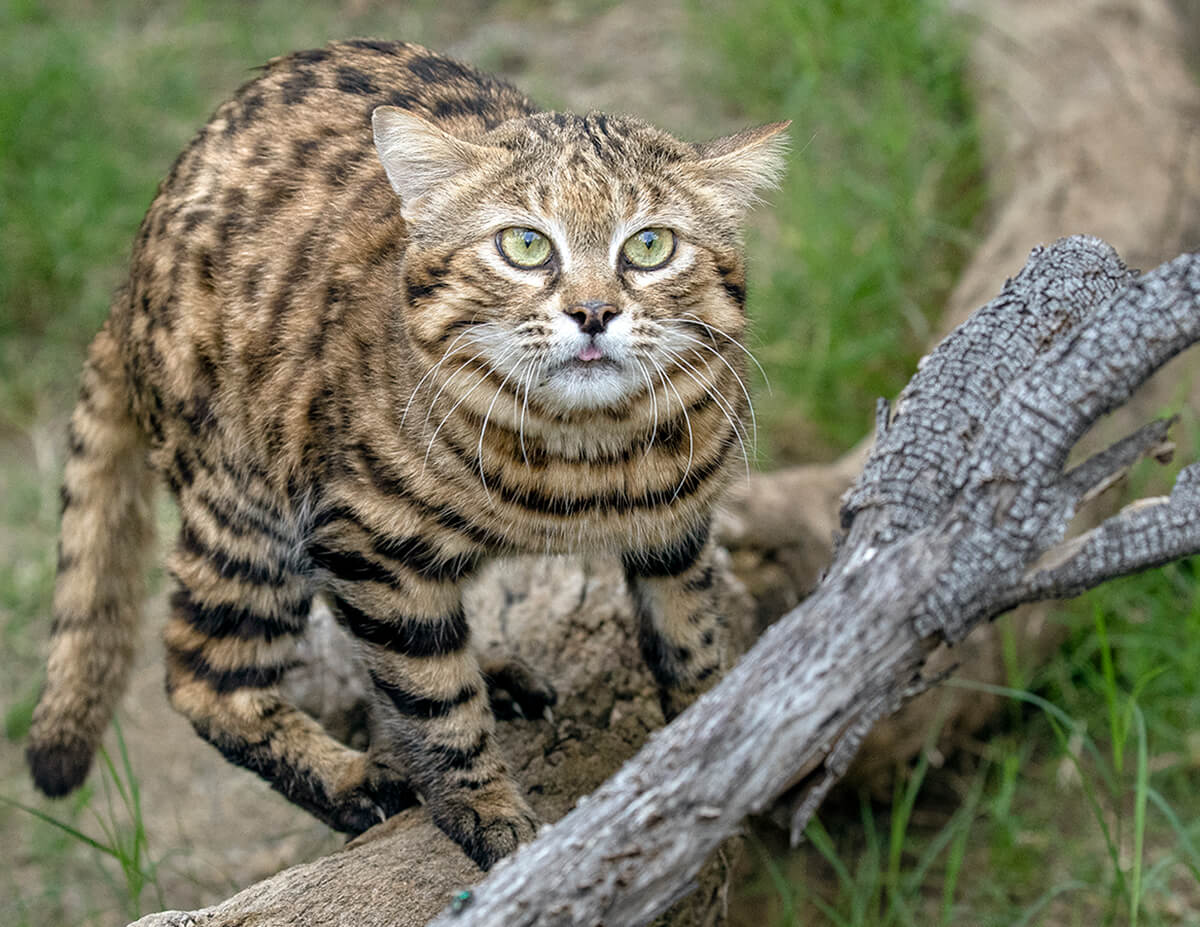
WHAT’S THAT YOU SAY?
Food items are sometimes spread throughout the cats’ habitat, allowing them to hunt. Sawyer is a noisy eater, making distinctive vocalizations when he chews.
Sawyer has his own quarters nearby, and greets his keepers with the characteristic hisses they have come to expect from the species. His mealtime vocalizations, however, are pure Sawyer. “He makes the funniest little growly ‘nom-nom’ noises while he chews,” Dion says, adding that some of his diet is spread around his enclosure, encouraging natural hunting behaviors.
Nocturnal and solitary, this species is rarely observed in the wild. The Black-footed Cat Working Group is the only group to ever conduct long-standing field studies of this elusive species, notes Nadine Lamberski, San Diego Zoo Global Corporate Director of Animal Health, DVM, DACZM, DECZM, who serves as veterinary advisor for the group. During the day in their native Africa, black-footed cats rest in hideouts such as the abandoned burrows of other animals like springhares, porcupines, and aardvarks. Their willingness to sublet hollowed-out termite mounds, if the need arises, likely led to their Afrikaans common name, miershooptier, which means “anthill tiger.” Black-footed cats move around quite a bit, following food sources and avoiding predators such as wild dogs, jackals, and caracals. Within a year, males inhabit a home range of about 8.5 square miles, and females maintain a home range about half as large (although recent research indicates their home ranges may be much larger).
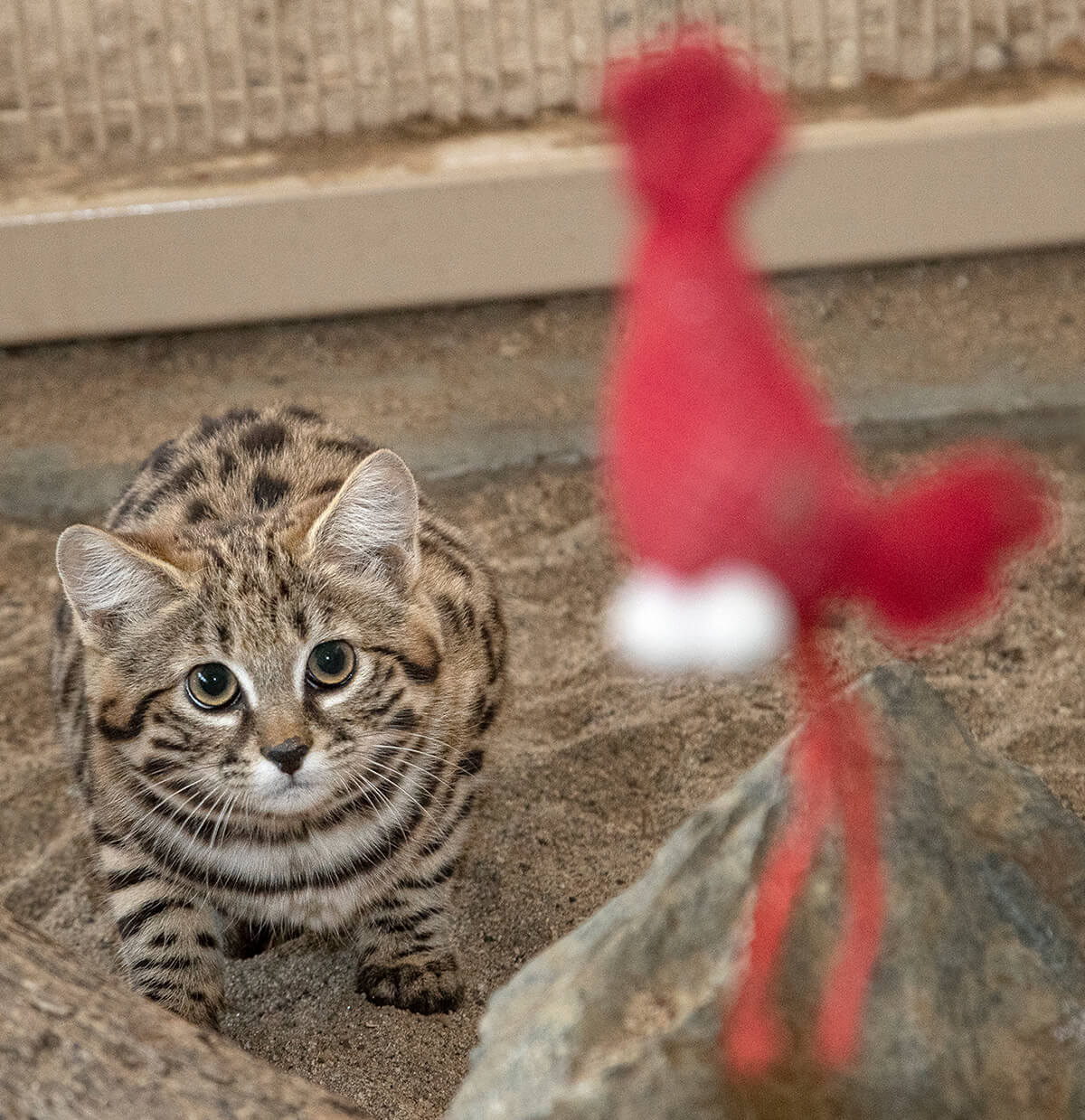
WATCH THE BIRDIE
Black-footed cats are famously accurate hunters, and Oscar gets the chance to practice his stalking and pouncing skills on toys.
The smallest cat in Africa and one of the smallest cat species in the world, the black-footed cat could be considered the poster cat for “little but mighty.” “They have the highest hunting success percentage of all the wild cats,” Dion says. Opportunistic carnivores, black-footed cats eat rodents, other small mammals, reptiles, insects, and birds. They are believed to bring home the bacon (or bird, or rodent, actually) 60 percent of the time. “They are called the deadliest cat,” Dion says.
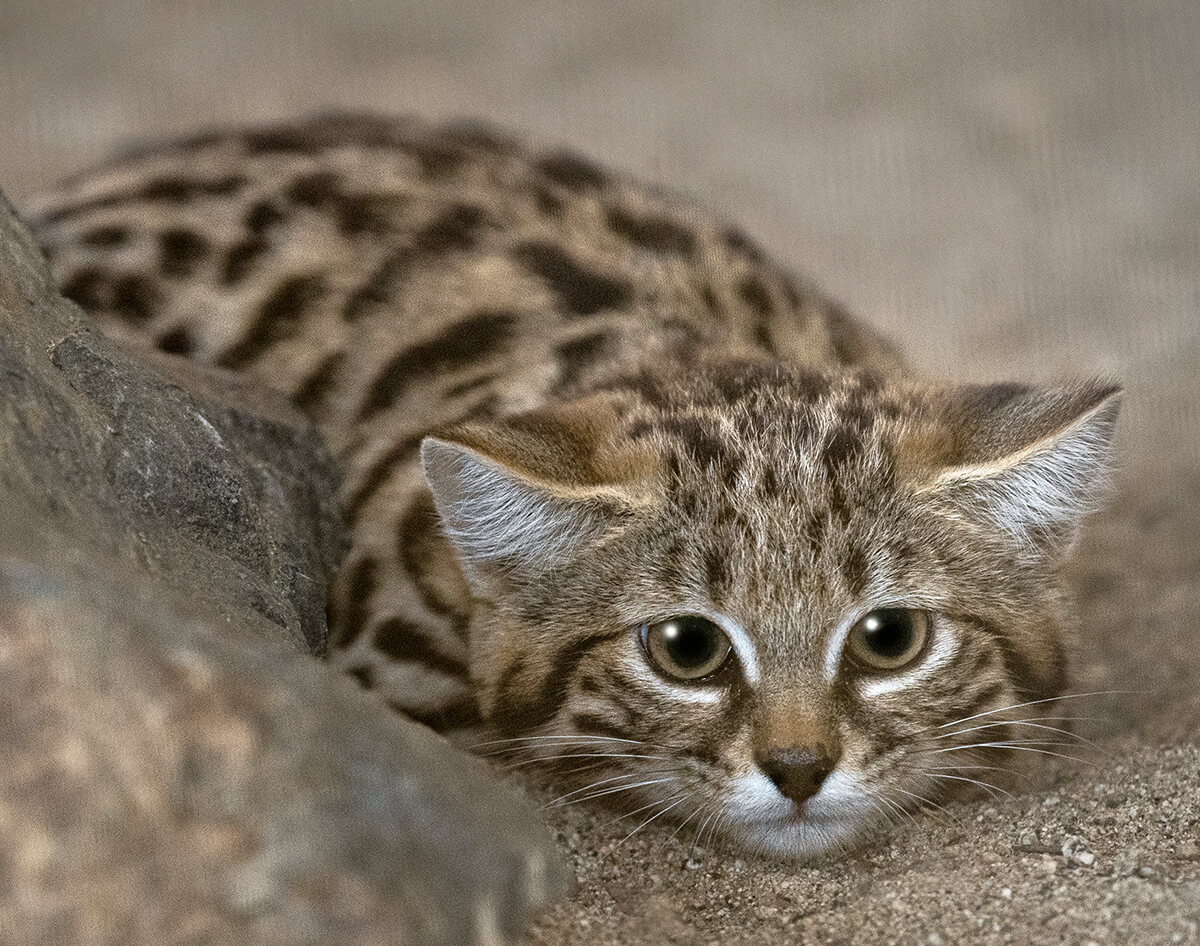
CAN YOU SEE ME NOW?
The pattern and color of a black-footed cat’s coat act as camouflage in their desert habitat. It helps when hunting—or being hunted.
Now that Sawyer and Odette are proven reproducers, it’s hoped that the future brings kitten sequels to the team. With the species facing threats from disease, predation, and habitat fragmentation, black-footed cats could use many more leading men—and ladies—to keep their story in production.


